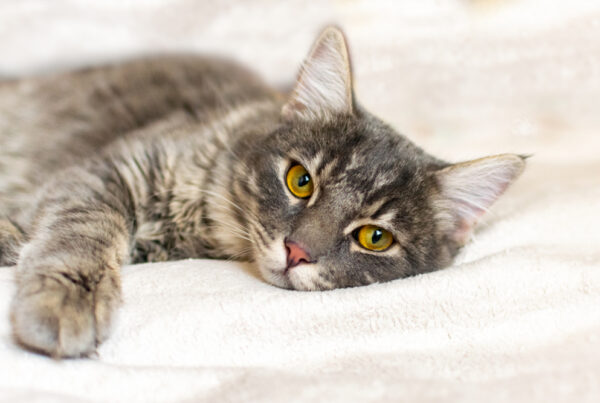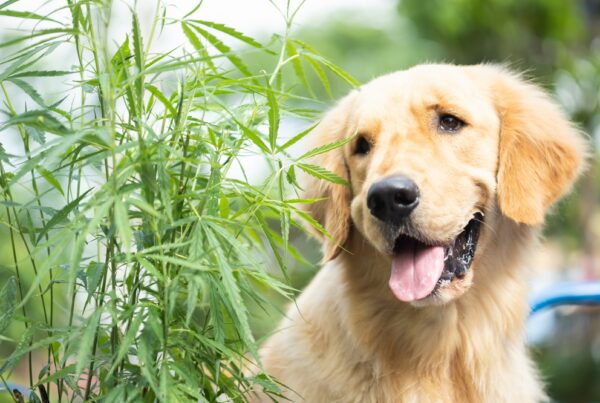
Summertime means more fun outdoors, but it can pose serious risks to our pets. Did you know that pets can suffer from overheating and dehydration just like humans? This article offers essential summer safety tips to keep your pets cool, hydrated, and safe during the hot weather.
Stay tuned for comprehensive advice on pet care in summer heat.
Basic Summer Safety Tips for Pets
Ensure pets have ample shade and water. Monitor humidity levels and limit exercise on hot days. Keep pets cool inside and out.
Never leave pets unattended in direct sunlight or in a closed car
Leaving pets unattended in direct sunlight or a closed car can lead to serious health risks. Cars heat up quickly, even with the windows cracked open. On an 85-degree day, for example, the temperature inside a car can soar to 120 degrees in just minutes.
This rapid increase in temperature can cause heatstroke, dehydration, and even fatal conditions for pets. Always provide plenty of shade and hydration for your animal companions when outdoors during summer months.
Pets rely on their owners to keep them safe from the dangers of excessive heat. Direct exposure to sunlight not only raises their body temperature but also exposes them to potential sunburns and overheating risks.
It’s crucial for pet safety in summer to monitor your pets closely and opt for cooler morning or evening times for walks or playtime outside. Keeping pets cool and comfortable is vital during hot weather, ensuring their well-being amidst rising temperatures.
Watch the humidity and limit exercise on hot days
To keep your pet safe in hot weather, it’s important to pay attention to the humidity levels and limit outdoor exercise on particularly warm days. Dogs don’t have efficient cooling systems like humans do, so they can easily overheat when the humidity is high.
High humidity affects pets’ ability to cool themselves through panting and can lead to heatstroke. Be mindful of this when deciding whether it’s safe for your pet to be outside during hot and humid conditions.
It’s crucial not to take any chances with your furry friend’s health, so consider indoor play or short walks during early morning or late evening hours instead.
Remember that high temperatures combined with excessive exercise can quickly lead to heat exhaustion in pets, even if they seem eager to run around outdoors.
Provide ample shade and water
Ensure your pets have access to plenty of shade and water during hot weather. Set up a shaded area in your yard using a pet-safe canopy or tarp, and consider adding some cooling mats for them to lie on.
Ensure there are multiple bowls of fresh, cool water available both indoors and outdoors. This will help prevent dehydration and keep your furry friends comfortable during the sweltering summer months.
Remember, providing ample shade and water is crucial for protecting pets from heat-related illnesses such as heatstroke. Additionally, keeping pets hydrated in summer plays a significant role in their overall well-being, preventing issues like fatigue, heat exhaustion, and organ damage due to overheating.
Cool pets inside and out
Keep your pets cool inside by ensuring good ventilation and maintaining a comfortable temperature indoors. Use fans or air conditioning to help regulate the indoor environment. Ensure that your pet has access to shaded areas, and keep curtains or blinds closed during the hottest parts of the day to block out direct sunlight.
If you’re taking your pet outdoors, be mindful of hot pavement that can burn their paws, and consider using booties for protection.
For keeping pets cool outside, place frozen water bottles in their bedding or use cooling mats to provide relief from the heat. Consider setting up a small kiddie pool for them to splash around in, but make sure they always have access to fresh water both indoors and out.
Additional Summer Safety Concerns for Pets
Protect pets against fleas, ticks, and heartworm and use sunscreen to shield them from harmful UV rays. Read more for additional summer safety tips for your furry friends!
Protecting against fleas, ticks, and heartworm
Protect your pet from fleas, ticks, and heartworm by using veterinarian-recommended preventive medications. These parasites pose serious health risks to pets and can be easily prevented with the right treatments.
Ensure to administer year-round preventative medication as these pests are not just a summer concern – they can affect your pet throughout the year. Regularly check for any signs of infestation or illness in your pet and consult your veterinarian immediately if you notice anything out of the ordinary.
Additionally, grooming and bathing your pets regularly with products labeled safe for use on them will also help in keeping these pests at bay. Remember that prevention is always better than treatment when it comes to protecting your furry friend.
Moving on to “Using sunscreen for pets”…
Using sunscreen for pets
To protect your pets from the harmful effects of the sun, consider using sunscreen specially formulated for them. Pet-friendly sunscreen can help prevent sunburn and reduce the risk of skin cancer.
When selecting a sunscreen for your pet, choose one that is free from zinc oxide, which can be toxic if ingested. Apply the sunscreen to areas with less hair or exposed skin, such as the nose, ears, and belly.
By using sunscreen on your pets when they are outdoors in direct sunlight, you can help ensure their skin stays healthy and protected.
Maintaining a comfortable temperature indoors
Ensure indoor temperatures stay between 75-78°F to prevent overheating. Use fans or air conditioning, and offer a cool surface for pets to lie on. Keep blinds closed during the hottest parts of the day, and ensure your pet has access to water at all times in a cool place.
Make sure there are plenty of shaded areas around your home where your pet can escape from direct sunlight. Utilize rooms with tile or concrete flooring rather than carpeting as they tend to stay cooler.
Additionally, consider placing ice packs wrapped in towels near their resting spots for added comfort during hot days.
Remember that pets can overheat quickly, so keeping them comfortable indoors is essential to their well-being during the summer months.
Signs of Overheating in Pets
Pets can show signs of overheating such as excessive panting, drooling, and difficulty breathing. If your pet displays these symptoms, move them to a cooler area and apply cool water to their skin while seeking veterinary care.
What to look for
Watch for signs of overheating in pets, such as excessive panting, drooling, rapid heartbeat, weakness, and vomiting. Additionally, pay attention to signs of dehydration like dry gums and loss of skin elasticity.
It’s crucial to act swiftly if you notice these symptoms and move your pet to a cool area while providing water and wrapping them in damp towels. Seek veterinary care immediately if the symptoms persist.
Ensure that your furry friends have access to shade and plenty of water even when they are outdoors on hot days.
How to treat heatstroke
If your pet is showing signs of heatstroke, such as heavy panting, glazed eyes, a rapid heartbeat, difficulty breathing, excessive thirst, lethargy, fever, dizziness or vomiting – it’s crucial to act quickly.
Move your pet to a cooler area immediately and apply cool (not cold) water over their body. Place wet towels over the back of the neck, in the armpits and in the groin region. Use a fan to help lower their body temperature.
Offer small amounts of water or ice cubes for them to lick.
Moreover, seek veterinary care without delay if you suspect your pet has heatstroke. Even if your efforts seem successful in cooling them down at home–it’s vital for them to receive immediate medical attention; untreated heatstroke can lead to organ failure and even death.
Preparing for power outages
In case of power outages during hot weather, it’s crucial to have a plan for keeping your pets cool. Be sure to have a backup supply of ice packs or frozen water bottles to place in your pet’s sleeping area.
Have battery-operated fans on hand and consider creating a designated cool space in your home where your pets can find relief from the heat if the power goes out.
Additionally, keep an emergency kit with essential items such as extra water, non-perishable pet food, and any medications your pet may need. It’s also helpful to have blankets or towels that can be soaked in cool water for placing over your pet to help lower their body temperature.
These proactive steps will ensure you’re well-prepared to keep your beloved pets safe and comfortable during unexpected power outages in the sweltering summer months.
Conclusion
Keep your pets safe and cool in the summer by providing shade, water, and limiting exercise on hot days. Protect them from fleas, ticks, and heartworm while ensuring they have a comfortable temperature indoors.
Watch for signs of overheating and know how to treat heatstroke to keep your furry friends healthy in the heat.
FAQs
1. What are the best ways to keep pets cool in hot weather?
To keep your pets cool during summer, provide them with plenty of shade and water, limit their exercise, especially during the hottest parts of the day, and never leave them in a parked car.
2. How can I prevent heatstroke in my pet during the summer?
Prevent heatstroke by ensuring your pet stays hydrated, avoiding intense outdoor activities during peak heat hours, and watching for signs of overheating such as excessive panting or lethargy.
3. Are there specific summer pet care tips to ensure my pet's comfort?
Yes! Ensure your pets have access to cool resting areas away from direct sunlight, use fans or air conditioning to help maintain a comfortable temperature indoors, and consider giving them cooling mats or vests.
4. What should I do to protect my pet from sun exposure?
Protect your pets from sunburn by applying pet-safe sunscreen on exposed skin areas like ears and nose tips when they’re outdoors. Also provide shaded areas where they can rest without direct exposure to sunlight.
5. How important is water safety for pets during summer activities?
Water safety is crucial; always supervise your pets around pools or open water bodies since not all animals are natural swimmers. Additionally, ensure they have access to fresh drinking water at all times to prevent dehydration.



